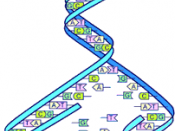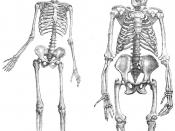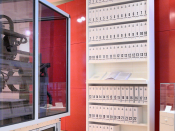Imagine a world where illness is no longer a deadly factor. It is not easy for most people to envision a place where all disease can be easily treated, cured, and even prevented: especially within their own lifetime, or the next twenty to thirty years. The researchers and scientist involved in the Human Genome Project share the vision of a pestilence-free world for humankind. The Human Genome Project (HGP), which originated in October of 1990, is an international research effort headed by Ari Patrinos of the Department of Energy, and Francis Collins who directs the National Institutes of Health National Human Genome Research Institute (NHGRI). The purposes of the project are to identity major markers on every human chromosome, identity specific markers about 100,000 base pairs apart, and to find the exact sequence of bases for every chromosome in the body. The project was originally planned to be a 15-year study but technological advances shortened the expectation date from 2005 to 2003.
The new expected date for the human DNA sequence completion coincides with the 50th anniversary of Watson and Crick's DNA structure.
Additional contributors to the project come from all over the United States and the world. The Department of Energy (DOE) and the National Institutes of Health (NIH) provide funding to many laboratories throughout the U.S. for Human Genome Project Research. The DOE Human Genome Project has nearly 200 separate investigators working for them. The hired investigators include several universities, colleges, and laboratories all over the United States. Many other countries have become involved in the research programs. As little as eighteen have some sort of involvement in the program. These countries include Australia, Brazil, Canada, China, Denmark, European Union, France, Germany, Israel, Italy, Japan, Korea, Mexico, Netherlands, Russia, Sweden, United Kingdom, and the United States. The Human...


